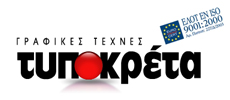Prefectures of Crete
Chania Prefecture
Municipality of ChaniaMunicipality of ApokoronasMunicipality of PlataniasMunicipality of KissamosMunicipality of Kandanos - SelinosMunicipality of GavdosMunicipality of Sfakia
Rethymnon Prefecture
Municipality of RethymnonMunicipality of MylopotamosMunicipality of AmariMunicipality of Agios VasiliosMunicipality of Anogia
Heraklion Prefecture
Municipality of HeraklionMunicipality of MaleviziMunicipality of Archanon - AsterousionMunicipality of FestosMunicipality of GortynaMunicipality of ChersonissosMunicipality of Minoa PediadosMunicipality of Viannos
Lassithi Prefecture
Municipality of MirampeloMunicipality of SitiaMunicipality of IerapetraMunicipality of Oropedio
Limnakaro Plateau
The Limnakaro Plateau is located on the northern slopes of Mt Dicte, near the Lassithi Plateau, at an altitude of 1.120 metres above sea level. It is enclosed by the peaks of Lazaros (2.048 m) to the east-southeast, Strovili (1.533 m) to the west and Megali Korfi (1.309 m) to the north.
The plateau covers an area of approximately 750.000 square meters. The plateau is heavily slanted and most of it is covered with gravel. Only the northern part of the plateau, measuring about 300.000 square metres, is composed of cultivatable soil. Fruit trees flourish on Limnakaro, especially apple and pear (particularly the delicious winter pears). The walnuts of Limnakaro are famous for not being hollow. At Skafidia there are walnut trees which are hundreds of years old, forming a small walnut grove.
Limnakaro was once farmed intensively, but nowadays it is used for pasturage by several shepherds who live there. In recent years there have been attempts to grow more trees there, especially walnut.
There are three access dirt roads of medium to poor quality. The first is about 6 km long and runs from Agios Georgios via “Vassilikos, Poros and Pouliou to Nero”, reaching Limnakaro at Skafidia. The second road runs from Avrakonde via Katsoura, Adilo and Fasoselo, past the cave of Peristera and ends in roughly the middle of the west side of the plateau. The third road is a small bypass of road Katofygi- Kaminaki: on the third km take the dirt track on the left. This will take you via Sklavomytis to Agio Pnevma (3.4 km).
These roads have led to the slight development of the area, with several country houses being built in recent years. The church of Agio Pnevma (the Holy Spirit) is a two-aisled basilica in the northwest corner of the plateau. With the addition of the second aisle, it now looks like a three-aisled church facing north, with the middle aisle higher than the others. The oldest aisle is dedicated to the Transfiguration and dates from the Venetian period. It contains fragments of wall paintings, meaning that it was built before the middle of the 15th century. On each side of the main entrance (now shut) and in the chancel are arcosolia, arched recesses used as tombs.
On the feast of the Holy Spirit there is a great festival here attended by crowds of people. During the service, the shepherds head their sheep in the church, where they are blessed by the priest. The service of the Great Hours is also held here on the morning of Good Friday. The Epitaphios (Christ's bier, containing an icon of Christ after the Descent from the Cross) is decorated with flowers from the surrounding area, and then carried in procession through the idyllic landscape.



 ENGLISH
ENGLISH







